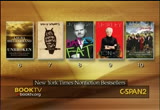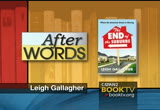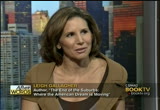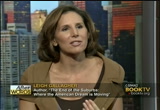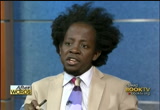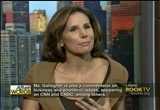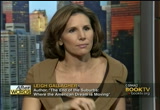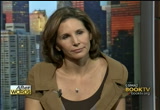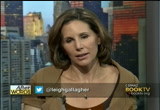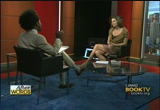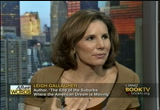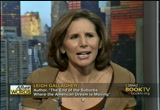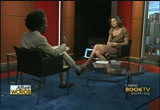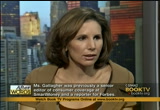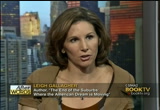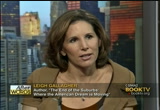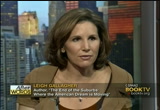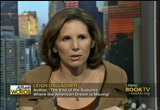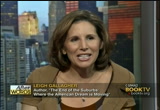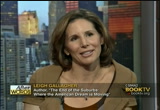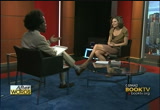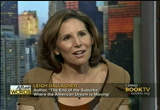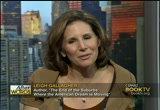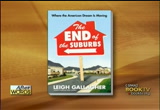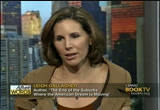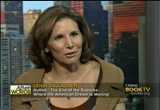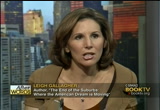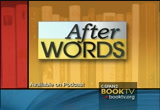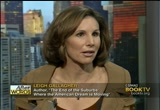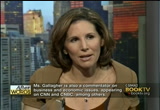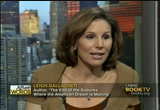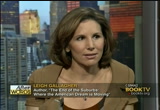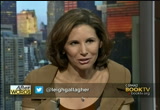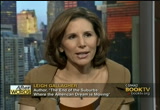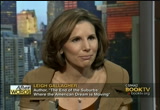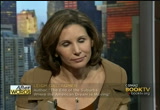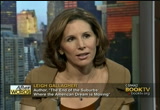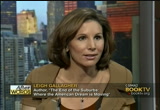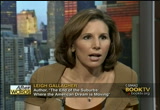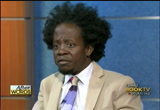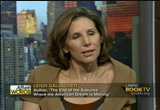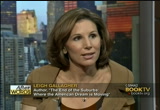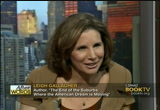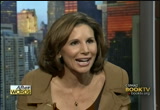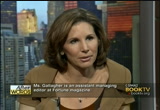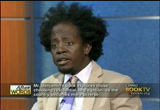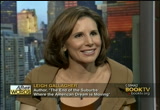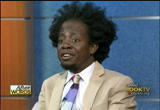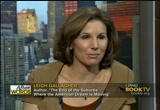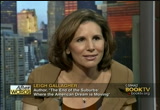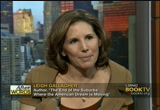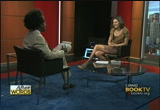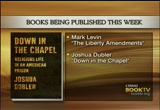tv Book TV After Words CSPAN August 10, 2013 10:00pm-11:01pm EDT
10:00 pm
10:01 pm
>> everybody live somewhere and you were telling us where we live in america the end of the suburbs. can you tell us about your title? guest of the main idea behind the book is that more than half a century of expansion into the suburbs the suburbs are at this sort of more than any other place the sort of cultural pillar of america. it embodies the american dream. it's the image of suburbia that people strive for and where most people live but that is changing. it's changing pretty dramatically. these changes happen slowly over time but every indicator you look at a showing this. we are tiring of this way of life and the reasons behind that are numerous and they are complex and they have been kind
10:02 pm
of grinding away for a number of years. but, the data the indicators out there, the sense of the american people who live in the suburbs we are really looking at a seismic change in how and where we live. i just thought there was a really momentous trends and one worth delving into so i did. >> host: i will be interested to hear about these indicators but first i wanted to know what inspired you to write this book to look at this momentous grand? >> guest: i caught a headline about census data showing this for housing data showing that. this sort of percolated into my radar a little bit and i thought this is interesting. there's something bigger they are so i started looking into it and it was sort of a case where every stone i turned over yielded some other fresh demonstrative fruits that
10:03 pm
something was changes that are housing preferences were changing and their migratory patterns are changing our demographics are changing. every aspect i came out and looked at. everything was sorted moving away from conventional suburbia and towards not the city though we can talk about that a little bit later but there is a huge movement happening. i am fascinated by a societal trends, trends that really shaped how and where we live. trends that sort of you know kind of hit us through the zeitgeist. i'm really fascinated by those kinds of trends when they are rooted in economic data and here i had a one-two punch. i had this topic i thought was so all-consuming and affects everyone so i decided to really -- and research it and and write a book about it. >> host: everyone has a relationship to the suburbs either by popular media for having with it themselves or a
10:04 pm
relative that lives there. so you talk about a shift. tell us about the old normal and tell us about the new normal. >> guest: you know what's really funny is everywhere he went everyone wants to talk about this topic. i would go to cocktail parties and everybody is interested in the topic. whether or not you live in the suppers. you either grow up there you know somebody at it and if you didn't grow there maybe you're curious about it or you have the opposite experience. everyone is super interested in this and so one of the things i encountered was a lot of people that grew up in the 70's or earlier had this tremendous amount of nostalgia for the suburbs they grew up in. one of the things that document in the book is how we the suburbs of yesterday look nothing like the suburbs of today. soundings and policy changes mass production being invented and taking over in the 1950's
10:05 pm
but if you think about some of the older suburbs a lot of the suburbs in the northeast or in other places around the country i would say before world war ii date grew up, they tended to grow up around streetcar stations. those were built before the car was broke. there was a nucleus where the public transportation dropped off. there was no car at the time period there was really no walking distance to that town. there was a new type of sounding that came to be and i go to it in great detail in the book but what i did was broke everything apart and mandated that all the stores are going to be here and all the houses are going to be over here. the industry is going to be over
10:06 pm
here and even the medical places are going to be over here. it's sort of spread everything apart and by that time the car is how everyone is getting around everywhere so instead of this lifestyle where you had to go from one place to the other to the other. that is sort of modern-day suburbia but as modern suburbia involves the distances between those points grew longer and farther and farther apart. so many years between then and now but during that interim we kind of over expanded far apart from the cities, far apart from each other and very far away from the cities and the traditional definition of the suburb is a residential community outside of the suburbs. many suburbs are hours away from the city so they overshot their mandate. >> host: would it be fair to take a community like new york city where we are for example.
10:07 pm
yonkers or new rochelle or westchester and then you go farther and farther to the outer suburbs which could be as far as bucks county pennsylvania are way up states of this trend has made us move further out into the excerpts. is that they are? >> guest:absolutely and that was happening anyway but then you have this housing boom that we went through starting in the '90s and the 2000 peaking in 2005 in 2006. i put the whole operation on steroids so what was considered excerpts 15 years ago are now considered intentional suburbs because during the housing boom you had people in new york city who would commit to commute to the poconos. this mania, there was this mania around getting the biggest house you could buy in the nicest house to get by in the living their living standards were so liberal that you could get a loan for almost nothing. we all remember that in because
10:08 pm
of the built-in layering of the american dream playing such a role in peoples lives people wanted that. they wanted to get these loans that they wanted to put themselves in the best house that they could and oftentimes that meant going the furthest out. the further away you go the bigger house you can get. it's plain economics. there was a coinage for that behavior and it was called drive until you qualify. you can't get the house in the suburbs that is big and beautiful but the one way you can really get that. the community is -- the commute is not so bad and it will be fine but commuting is a whole other topic i spend a lot of time on in the book. 3.5 million people in the country commute 90 minutes each way a day. >> host: hugh quote an expert who has this fascinating statement and he says this the sprawl demon is dead. tell us what you found about this whole sprawl phenomenon.
10:09 pm
>> guest: it's funny there are two camps of thought when it comes to sprawl and is it totally dead or just sort of quieted down because of the housing bust and is it really going to come back when the market comes back to ask the housing market is starting to come back. those who say it's dead say this was a failed social experiment. this did not work. many are totally legitimate. when you look at demographic plants and the changing a tour of the american family there is really a case to be made for the next build the next time expand its going to look a lot different. this particular source who said the sprawl demon is dead. he's a former civil engineer in minnesota and he spent many years basically building sprawl. he put in place infrastructure that wired sewers and pipes and everything to suburbia. it costs a lot of money and costs a lot of resources to
10:10 pm
build suburbia and his major point is that the suburbs are financially unproductive. he thinks that they are basically a ponzi scheme because it costs so much money to lay those pipes and build that infrastructure that the tax revenue that you get from low density arrangement of single-family houses is not going to come close to paying for all that. grants to fund the initial project of building the pipes which is hundreds of millions of dollars and the only way to fund that growth is to get more tax revenue coming in. that is his take on things and he really thinks we need to build communities that are financially productive. there is a financial angle to how the suburbs are built in addition to the angle psychointo that support the argument as to why they are not building in the smartest way. >> host: one of the elements i love about this book is its very careful and it's very thorough. you describe suburbs as they
10:11 pm
once were. you describe the phenomenon out how people move further out into these master-planned subdivisions and you are saying that's really dead and now we are moving towards a trend of urban i suburbs. tell us what that means and now take us through the trends that transcend demographic phenomenon that explain why this is happening to us. >> guest: it's funny looking at the topic when you think the suburbs are dying, it's absolutely true. but the places that are going to do well this doesn't necessarily mean that everyone is going to rush to a skyscraper in new york city. that's ludicrous in itself because a lot of people don't want to live that way either. there are a lot of people in this country that people say over my dead body in my going to live in the city but everybody wants to be closer to the things they do every day and closer to the people they want to see and
10:12 pm
spend less time in their cars and just be less isolated. that is what is driving a lot of this to one of the things you are seeing is builders and developers and planners are sort of falling all over themselves to build these urban places. i hold this up as a paradigm in the book. many of them are built on the old kind of suburbs that we have forgotten about. >> host: what are those? guest of the urban burbs click summer of them are the older servers that have remained untouched. places like montclair new jersey is a great example. it has the classic tom village. those suburbs are going going to do okay some of them are literally
10:13 pm
highways is in the middle of suburbia with a couple of stores down below so people can walk to a restaurant and everything. some of them are brand-new communities built on these older traditional planning principles so they are meant to replicate the prewar suburbs. in the book i spend a lot of time but one community which is in gaithersburg maryland and this community is a new urban community. new urbanists are a subset of the urban burbs universe and they have been lobbying this for years. now they are seeing their moment in the sun because if they builders are trying to do what they have been doing all along. this community is really fascinating. it's far away, about 30 miles from d.c. and you drive and drive to get there and it drives to this conventional suburban strip mall place and then you make a left turn and you enter into this community.
10:14 pm
all of a sudden it's these narrow streets. it's a little town center with sidewalk cafés and the houses are these federal townhouses adjacent to each other right near town and they get further apart as you go away. it's almost like an older community cut and pasted into the middle of suburbia. it almost feels like georgetown or park slope which is structured in the middle of suburbia. klesko have actually been there. my parents and my brother lived near gaithersburg so i know this community with a walk ability in the town center, with the proximity of mix-and-match housing. it's fascinating the way you describe it and i mention that because a lot of your research is data and census driven but you also have these poignant storytelling of people you have met. for me one of the most memorable moments is when you speak of a woman who thought she wanted the
10:15 pm
american dream in the suburbs but she moved there and she felt isolated. tell us about the people you met in the stories you found and what were some of the most memorable moments of people you met? >> guest:guest koshy was one fo. this was a woman who had three young children at the time period she and her husband, they wanted the whole american dream. they never lived in suburbia and she thought i want to do this. this was outside of boston. she thought if we are going to spend this much money with the housing thumb $300,000 for a house we wanted to be a really nice house so they went a little further. they started looking at the closer suburbs in boston and they were too expensive. they went further out and ended up getting a huge colonial enabler enabler thing subdivision and they thought it would be great. they were really disappointed with the quality of their lifestyle. a lot of things about the way
10:16 pm
they lived their days were really different than what they expected. i think one of the biggest things for this woman diana rosen was her name, she didn't realize how much time she would be spending in her car. i found this over and over again. meet many people that move to the suburbs think they are going to have this life like they had in the suburbs where you open the door and the kids run out for three hours after school. they all play together and you call them in for dinner. that doesn't happen anymore. it does in some places but if it does it's rare. we are in this played a culture where everything is scheduled. this isn't necessarily just the suburbs. this happens with parents in new york city who do this also. it's more of a lifestyle. dual parent and working households. this mother of three found herself from 3:00 p.m. to 6:00 p.m. every day 40 to 50 miles driving all the kids to soccer practice and hebrew lessons and this or that and
10:17 pm
this is what they had to do. it was an inspiration for one of my chapters in the book called the mike cars the way to gymnastics. that is what she did every day. she also founded isolating. she didn't like that the community was very, it was not the first in people's ages. everyone was between the ages of 30 and 50 and raising young children. a lot of people will say when you live in the city or an older suburb maybe and one thing the new urbanists lobby for us this diversity of age group being a mixture of people. you want older and younger people and everything in between. it makes for a more vibrant community rather than everyone having a single purpose which is raising their kids. there is nothing wrong with that but a lot of people seek more of a mixture. >> host: with this age homogenate he and these long commutes and with this ponzi
10:18 pm
scheme of the financial on 10 ability but other complaints do you find about the suburbs and talking to people around the country? guest of the commute is a big part of it. one the most interesting stories that i found was i talked to a woman who is is an orange county in california and she and her husband moved, they wanted to move to the inland empire to a town. an empire is where a lot of the housing expansion happened during the housing boom. they intended to find work there but they couldn't because the job market was not good. they said we will keep our jobs in orange county and commute every day no big deal. they did that and it was this really terrible commute. they would have to set their alarms for 4:00 in the morning leave at that for:15 and only at
10:19 pm
that time at the commute be one hour and 15 minutes. any other time it would be two or three hours so they would drive from temecula to orange county and they would leave so early that they would park the car in the mcdonald's parking lot recline their seats and set their cell phone alarms to take a nap. on the day she had to come in by herself she would want to sleep in a mcdonald's parking lot by herself so she would go to her classroom. she was asleep under her desk and she said to me at felt like george a. reference to the "seinfeld" -- she would bring her flat iron and get ready for school in the bathroom. then the commute home was even worse. she would spend two or three hours in her car and get home plop down on her bed. they were different because they were trying to get to a situation where they lived and worked in the same place and they ultimately did but she quit her job before finding another one. she said i can't do this again.
10:20 pm
this is not good so they ultimately did find jobs and to make you a bit in the interim she left her very good teaching job for which she had gone to graduate school and she started tutoring for eight to $10 an hour. that was better than doing this for any longer. >> host: that is sort of the dark side or the downturn of the suburbs and in this book you declare the end of the suburbs but you say personally you are not against the suburbs. you have nothing against the suburbs. tell us about the defensiveness and the flavor of the suburbs that you encountered. guests go it's funny, i am not some sort of anti-suburb person who thinks that everyone needs to live in new york city that is not why i did this book. i understand why people like the
10:21 pm
suburbs. i get fed up with a lot of daily life in new york city. i was more drawn to the trends which are so undeniable and the fact that there's a shift in the way suburban america is received by the people who live there. it's too big of a story to ignore. i had a wonderful experience growing up in suburbia. i grew up in a town in pennsylvania. it's an adorable town. it was prewar. it had all of these greens that you don't see any more. it has a trolley and a test of courthouse. it has a lively main street and all these events. we could walk to the town for my neighborhood for a great annual fourth of july event. it was really idyllic. these are the people are nostalgic for and that doesn't jibe with the way people live today. one piece of data that i came across is the average age in this country is -- so it's
10:22 pm
pretty new. you think about older communities being so charming that most people don't live in those communities. people like new houses that those houses are built differently and those communities look and feel differently than the ones that many people grew up in. i was just very maybe not defensive but i just wanted to put it out there that i had a wonderful experience and i can see why people want to live there but i'm telling you it's changing. >> people are perceiving the changes but before we talk about the changes i wanted to ask you do you watch housing television? >> guest: sometimes. plus though i don't own a television but when ice pick away to my sisters house i will watch all these shows. i'm just curious what you think is behind this booming popularity of these shows flip my house, turn my house, find my
10:23 pm
house? >> guest: i think this was my house is a product of the housing bubble and the housing mania where everyone thought they could become a millionaire from buying a house and flipping it. that time is over. when the housing market comes back it's not going to come back like that. that is one aspect of it but another is there is this obsession with the fantasy house and building it or improving indoor making it better. it's okay to like where you live and what your house to be as nice as it can be or if in your apartment. i want my apartment to be nice and cute on the inside so i care about what the senate and fixing it up. if you look at the trends at how we are fixing up our houses and what we care about in our houses those are changing to match. the average size of the houses going down although the data doesn't totally show that.
10:24 pm
too i have one person in the book he says the living room is a danger species. these shows can reflect that. everyone wants a great room in an open kitchen. we are seeing more of an interest in efficiency where you maybe have less space that you use more of it. in my house growing up we hardly ever use the dining room. we used it on holidays and even then we set up a buffet and went into the living room. my mother started the business and she called the trt productions because it was dining room table because that is where all the papers. homebuilders are incredibly responsive to office. they design what we want. if you look at homes being built today they are making more
10:25 pm
efficient use of space. >> host: space is such an out of reflection of our inner beings in needs as families and individuals. in two right mind but that post is a homebuyer to see how people were living. you talk about space, building space and it's fascinating. that's just one trendy point out that we are living generally in smaller houses as defined by square footage than we were 10 or 20 years ago. >> guest: that's true and the trend in homesite has been expanding since the 50s. the average size was 900 some square feet. i can imagine that now. i can imagine that. i live in a little apartment. but yet it's shifting. it's starting to shift. it's funny when you look at other things that are starting to show up in houses, for a long time everybody was into having a
10:26 pm
tag on the back of the house. that was a big suburban movement. a long time ago air-conditioning fell to the side. he didn't need to hang out on the porch anymore anyway and i'll pick him up about the backyard in the deck in the grill and everything and that was the focus of entertaining. as porches come back into homes porches are important because there is a real social element to them. they draw people out. people communicate with each other more although the houses have to be sort of close together for that to happen. the way houses are spread far apart now it's not happening a lot. there was one person who said in the story, i mean set of the book i know more about the person i sat next to on the plane that i just took them the person i have lived next to for five years which is true of a lot of people. postcodes fascinating the same way people have all become
10:27 pm
pseudo-food experts because of the food network and we have become conscious of space and design. we were let's say a generation ago. before we go on break one fascinating quote is to put and expert who used to work at the cdc who said it's almost as though the suburbs were built to make america unhealthy. what did he mean? tell us about that. >> guest: there is a huge health angle here. the way the modern suburbs were decided -- designed with the subdivisions and friendly to the car, very inhospitable frequently to pedestrians anybody who wants to walk. a lot of our modern-day suburbs and again there's the modern suburbs and the older submersed david older suburbs have the sidewalks in the newer suburbs down. people don't want. people don't walk even when they can't walk. the woman from boston rematch and try to organize an effort to
10:28 pm
get kids to walk to school. it was an ideal little as possible and that we want to do it. people love their cars in the suburbs and what with this doctor max suggested and he spent a lot of time researching this is this is not good for our health. children don't walk to school nearly as much as they use to 40 years ago or ride their bikes. they are not really active. when you are not using your tv to transport yourself around at all it does kind of take a toll on your health. walking is important for a number of things and i have spent a lot of time getting into how the body functions when you're walking regularly in the book. he really thinks t is wh we
10:29 pm
have so many escalated levels of diabetes heart disease and children receiving these diseases that were once limited to adults. our environment has a huge amount to do with their health problems in this country. he marshals a lot of data to show that and it's kind of logical. if you are in the not walking or spending three hours commuting that mike eat into your jim that time period. >> host: you talk about diabetes but i also remember you citing depression. >> there is some data on that and especially with children. as a teenager you are reliant on your parents driving around.
10:30 pm
there is a lot of people in the psychology field that have studied this period among adults too a lot of adults move to the suburbs and find it more isolating than expected. this isn't to say that they aren't likely communities in the suburbs. many communities mna cul-de-sacs are like a familial environment. that is true that many people are also surprised at how angularity and the lifestyle is because you were attached to your car and driving everywhere and there is no encounter between people on the streets of people out walking. this is the kind of thing that people want more of and that the builders are trying to provide for people. >> host: fantastic. let's take a break. >> guest: okay, great.
10:31 pm
>> host: leigh as we know we have experienced a housing bust and you can drive to certain communities where the whole -- vaccine to look abandoned. tell us about the housing bust and what you discovered there. >> guest: we have many of these they are called somebody subdivisions where they were built in many cases purely because of the housing film which was so, all this money and all the loans were artificially inflated. the subdivisions were built further and further away and so many people lost their homes. now many of them are empty. our overall inventory problem is a lot better than it used to be during the height and as we were covering from the housing crisis
10:32 pm
but these zombie subdivisions are still out there. you can do a great deal on a house if you want. >> host: what is the effect of all this over stock in what should we do with all these abandoned houses in these communities? >> guest: are people going to go back and repopulate those houses are they gone for good and there is a lot of the case to be made that there is ever going to be the demand for those houses in those locations ever again. a lot of academics have come up with a lot of ideas about what to do with those houses. one big push right now is to try to rehabilitate the buying up a bit by bit companies who want to turn them in two rentals. there is a big effort to do that but and there's going to be economic opportunity there for those institutional landlords but the communities are going to look different that way because when you have people who own the house and they take better care
10:33 pm
of them that presents some questions and ultimately are there enough people to populate houses like that when they are located away from core centers where most people live. the other thing people suggest it is maybe they will be turned into subdivided houses and again turn them into communities that are almost like a house with four different apartments at or something like that. the problem is the zoning laws won't allow that in the houses were really -- weren't built to last like older houses were so the houses will deteriorate at some point anyway. nobody really knows what's going to happen. there a lot of people out there that think these houses are going to be the slums of tomorrow. that'll fund would be an interesting reversal. it wasn't so long ago that there was a time in the 1800's if if you set the cities were going to be -- can no one would have believed you.
10:34 pm
then of course look what happened in the 1970s. it was sort of everybody either went to the suburbs -- the cities were destitute and now that his rivers. >> host: there are some homebuilders and realtors who do believe the excerpts will make a comeback and in and they have them pulled up their resources entirely. that is the dynamic to see whether in fact it will become utterly permanently abandoned zombie communities or whether people will draw a stick in the ground and 35. >> guest: if you look at demographics demographics are a huge part of the conversation. if you look at the birthrate but we come to think of as the american family a married couple with two young children historically the predominant driver is -- that family unit is shrinking in a big way. you have to think these houses were built for basically
10:35 pm
families. they weren't built for single people living alone which is one of the fastest-growing household types and they weren't built for people with no children. but demographics around children in this country in the birthrate are striking. as a result we have suburbs that are aging where there are more baby boomers and seniors. in the suburbs than young families with children. this is a huge part of the story and in the book i talk about my father grew up in a community outside of philadelphia called driscoll phil. it was populated with tons of kids and on the 900 block of glendale avenue there were 41 children on that block when he was growing up. and now i actually hired a private investor -- investigator to get the number of how many kids are there now and there are less than 15. that change is happening all over the place. there is this imbalance that will mean we have way too many of one type of how house and not
10:36 pm
enough and another. the ones we where we are going o have to much a bar -- the zombie subdivisions. your point that the homebuilders are many of them still believe that there is a market for conventional suburbia and there probably is still. they might be right but it's going to be dramatically reduced market. i spoke with the ceo for the plug-in he is the word mothball. we have mothballed some of our communities and what they mean is they are not building more. they don't open a community and unless it's fully sold and populated. this is one of the biggest counterintuitive indicators that i have found is that they are going like gangbusters building in new york city. they have 30 buildings here. they are expanding to other cities and expanding to são paolo. they are going completely or pin. this is not the majority of their business but the fastest-growing and one of the brightest spots in the company's
10:37 pm
business now. condo buildings, 20 million-dollar condo buildings. 10 or 15 years ago if something you would have never seen. >> host: i have a two-part question for you. the first part is we notice as we speak detroit is going bust now. the first part of the question is what cities are having a renaissance you are talking about and why do you think that is and what cities are not? >> guest: our city stories the tale of two cities. the detroit story is sort of separate. one of the things that is lost in the discussion about detroit and our cities is the city's economy and fiscal health are oftentimes two different things. if you look at new york city new york is thriving by any definition. if you look at neighborhoods like the meatpacking district. in the 70's or 80s he wouldn't be caught dead there now looks like a casting call for the bachelorette.
10:38 pm
there are so many 20 somethings on the weekend that it's the place to be. new york is like an amusement park in many ways were the economy is doing very well. new york has fiscal problems too. many of the problems that detroit has. detroit, some of the rust belt cities are still adjusting to a massive shift in the economy from an industrial-based economy and a number of other things are happening there as well but not all cities are widely responded in research and the way that new york is that many are. i think places like detroit and buffalo and some others at the minority. overall the story about cities right now is that more people are staying in them and more young people with families with children. >> host: fayetteville is thriving and booming, denver is
10:39 pm
thriving and booming. chicago is thriving and booming. what do these places have in common? >> guest: but they have in common is living in a city and raising kids in the city is an option where it didn't used to be. i talk about it in the pub. driving away from suburbia, rising gas prices and people having fewer children, people wanting more of a sense of liveliness and their communities schools improving the cities. the schools are still a big issue in the suburbs but that's starting to change. and cities are different. a city like seattle or austin are easy to have the suburban lifestyle than the cities. you could have a single-family detached houses still be in the city. in fact you are living in a single -- usually single-family houses are denser and they have those characteristics that people are often looking for in the suburbs.
10:40 pm
>> host: right. you outline the generational trends, the graying of the suburbs, the taste of millennial sent consumer taste. are there any racial dynamics to the phenomenon you point out to why people move or to the appeal of certain places? >> guest: it's interesting. there is a lot of racial inequities in the housing market. the homeownership rate right now is 65%. that is the average homeownership rate. for whites is almost 74% and for afghan americans it's 40 some percent. a lot of this goes way back to when our federal policies that supported the housing market were put in place way back after the depression. depression. you have the fha and the original government-backed loans that were put in place to jumpstart the housing market in
10:41 pm
the 30s and in the 40s and 50's. a lot of the -- there was a process whereby red blue yellow or green and almost all african-american communities were quoted red. fha would not back loans to those communities so i mean it was factoring the biases of the day. those are gone now but there are tremendous racial inequities in the housing market and also the suburbs when they exploded in the 50s and 60's they were primarily white. that has changed a lot. suburbs have grown so much and suburbs of every shape and flavor wealthy every kind of class and every kind of phrase. they really do resemble america
10:42 pm
much more than they did in the 50s and 60's and even the 70's. that is a little different but people like to be around people like themselves than you see that all over the place. they new york city the housing prices are pricing out anybody but bankers so it's not so diverse and mr. >> host: your neighborhood is full of that. >> guest: it's 20-year-olds and. >> host: we are now the former suburban mostly real estate developers going into the cities because they see money to be made and these luxury condos look and in fact cost a fortune. also that racial flip but justification. you talk a lot about gender --
10:43 pm
gentrification. guess that's what pushes a lot of people out and it is what has made new york affordable for a lot of people. >> host: to less about the millennial's. let's talk about the millennial's. how are they going to change how we live than where we live? >> guest: there is a study about literally everything that they do. i found one study that said my millennial moms use their phone in the bathroom or the non-millennial moms. it's kind of crazy but they are really important because they are a huge population bigger than the baby boomers and what they are going to do is going to determine the future of our housing market. right now as has been well-documented a lot of them are still living at home. there can't having this failure to launch situation. that is maybe an overstatement but it's true. people at that age group in their early 20s are living at home still been in the 1940s.
10:44 pm
that is because of the job market and the number of other things but when they launched studies show they don't want to launch into the suburbs. they are not getting drivers licenses anywhere near maybe you and i did when we turned 16. they want to be where everything is nearby and where they can walk everywhere. they like walking suburbs but there aren't enough of those places. that is where the demand comes in. they want that and everybody else wants that there are now a lot of those communities. a lot of them grew up in the excerpts so they don't know what it's like to drive 20 miles to get a gallon of milk. don't forget they are attached to their devices. it can't text when you are in the car. i mean he shouldn't but you can't be doing all the social networking when you are driving.
10:45 pm
they are huge users of public transportation. they just don't want any part of that. it has been studied so some people say okay that's fine to wait but wait until they have kids. the birthrate among millennial's is at an all-time low for that age group and there is a reason to believe that they're not going to want to go back out there even when they have kids. see that changes. the housing market and changes for everybody even if you are not millennial's. >> guest: it creates this imbalance where we have all these imbalances in all these people that want a different kind of house and different kind of place. there is this tremendous and made one expert i quote in the book thinks we have an oversupply of of millions of single-family large lots houses and what is going to be done without? what is going to be, that when
10:46 pm
the baby boomers living in them now and big natural housing turnover happens this younger generation isn't going to want to move into them. as this much is an imbalance we have now it's going to get worse. >> host: you were are an editor at fortune so just between you and i and nobody is listening so let's be real. in terms of financial value at the bang for your book and in terms of quality of life you can live in anyplace in the city where would it be? where would you recommend folks move given all the research you have done and all the places you have seen, given your understanding of the market. dallas, where would you live? >> guest: and urban blurb and there are many shapes and sizes depending on the market in the geographical area. there are many mentioned in the book. maybe i should open up some kind of consulting service for people to live. [laughter] >> host: so i would need to pay you for your expertise.
10:47 pm
>> guest: around new york in the suburbs that have been a kind of organic village. places like montclair and scarsdale. all of those suburbs most of them have that kind of village. they were older suburbs. there's an interesting correlation between the age of the community and a sense of life in us. people have studied this and found that. or i would go to a place where there is a town center that is cool and interesting and a place you would want to walk around mbm and that places within a couple of miles of where you live. you don't have to deal to walk from your house to that place but that play should be a mile or two and not 10 or 15. that is everything. i had someone in the book who says it's no longer location location location. its access, access, access. >> host: access to what?
10:48 pm
>> guest: access to what you want to do every day. access to other people and commerce and the town center. access that will save you time and people say the one thing money can't buy his time period let's take away the 45 minutes he spent in your car and give that back and put you somewhere where everything you need maybe not your job but everything you need is within a couple of miles of where you live. >> host: there was one place he described like that in colorado. >> guest: this is an interesting example of what we are doing with dying malls and other indicator of what is happening to suburbia. what is happening to giant suburban shopping malls which were such an institution in the 80's but now a new one hasn't been built in years and people don't really want to shot that way anymore. they're these massive structures and you can't do anything with them. you can't just raise them. they are massively expensive complexes. there's a movement to turn them into villages and one of these neighborhoods is happening in
10:49 pm
lakewood colorado called belmar. they turned an abandoned shopping mall into a community with 1100 houses and stores with retail and cafés and restaurants and ice skating rink and movie theater. they turned it into this really great community were a lot of people at move. that is an extreme extent one i don't know that everyone wants to live that way but it accomplishes a lot of different things at the same time time ped to put that space to use and build a community where people can be walking more and have the sort of urbanized lifestyle in the suburbs. >> host: tell us where physically the future is moving but tell us where he think -- is moving and i think from my thinking that is the provocation of this book. it's very evocative and fascinating you declare the end of the suburbs because there is such a linkage are thinking between the suburbs and the
10:50 pm
american dream as he said. let's talk first about what you think the future of the american dream is? >> guest: it's probably in flux. is the dream going to be a lifestyle and not even a half? who said that the dream had to be a structure? we did that to ourselves. james adams who wrote the american dream, it was not meant to be a house. we were so fascinated with the house and the mention of suburbia that it had to mean a house of the picket fence and and a lawn and a car and everything. it is changing. is the american dream going to be a condo in a high-rise? i don't see that happening necessarily but i think it's going to be a lifestyle where there is more community. i used this works out much in the book but liveliness. the dream is not necessarily just about the house itself. it's about what you do and the
10:51 pm
people you surround yourself with and i think that is going to play a role in where people choose to live and how they choose to live. it might just be a smaller house in a community that has sidewalks that is not too far from a center. that's not so different that in many ways it's completely different from where people are moving. >> host: this is a fascinating thought. the american dream doesn't necessarily have to have a structured but what is poignant for me is they did a study and a lot of young people think that they will not have it better off than their parents did. so if one believes the american dream means doing better than their parents did in that sense the american dream for some people is on the decline but it's fascinating in the book the way you say okay the american dream isn't the suburbs but it could be this, this and this and it's very persuasive the way you lay that out. >> guest: yes, that is one
10:52 pm
thing that you made a really important point which is you know it has blossomed at a time when our economy was booming in the middle class was booming and when there was hope and opportunity as far as i could see. we are living in a different time right now. i am optimistic about the u.s. economy. we are in a recovery but the declining middle class is a huge trend in that plays a role here. the middle class is the engine that grew the suburbs and so again now that is going to show up in our housing market and in the way that we have arranged their landscape for the future. you don't want to be negative and say maybe there isn't an american dream anymore because we don't have any hope. i don't believe that but it certainly doesn't hold a place in. >> host: i don't believe that either but a lot of young people feel their prospects are on the decline. we will see. the book reads very well.
10:53 pm
so blithely. tell us what you enjoyed writing about it. but if you like the most? >> guest: i really liked talking to people and hearing baruch's branches in the suburbs. i liked building my own experience into it and i like tracing the narrative of our country through the suburbs which it's just tells the story naturally. i like that and the individual people i talk to and hearing the crazy stories about how people live and i mean some people love the suburbs and some people hate them. i really encountered a wide variety of people. some people love exactly what other people hate about them. i talked to one woman who lived in a community where the houses were built so far apart that oncology and they didn't want her kids trick-or-treat because it would exhaust them. they would get tired and they wouldn't get any candy. they thought it wasn't safe so
10:54 pm
the parents decided to drive and park their cars and tailgate. the kids would trick-or-treat car card car to car. some people here hear that and they say that sounds horrifying. what if we come to? some people say that sounds great let's bring the wine and decorate our cars. they were creating this folk community because they had to -- live too far apart. this woman was interesting. she said i don't need to walk everywhere. i have five kids. if i could walk to the grocery store do you think a field to walk back with all the groceries? people have a lot to say about that and that was my favorite part is to hear people talk about their own experience to see how that fit in with the trend. >> host: how long did it take you to write about? >> guest: i did a year and a half of research and a year of writing so i could have spent more time on it. i went down so many rabbit holes. there is so much history.
10:55 pm
it's true what people say about authors. >> host: by the way you are both a writer but you you're also an editor and i think that is reflected in the book because it is balanced. you say this is what is happening and i'm just presenting it so that is the book but just between you and i tell us honestly you talk about prefab isolated cookie-cutter subdivisions and the information in the book but here and now are you sure you are not glad that is something of the past? >> guest: i am glad that some of that is a thing of the past. i think the way we built our residential ways were unhealthy and unsustainable and inhospitable to relationships and not good. i think people thought there was a wonder and beauty to that and i think they felt if they did
10:56 pm
and you know it's very hard to find people who love everything about suburbia. on twitter i found so many people that said i hate the suburbs but i found one person in the billions of tweets that had a hashtag i love the server -- the suburbs. i will say it here and now with you. absolutely. >> host: beginning to conclude, what were you the most surprising learn and what do you think your readers will be the most surprised to learn reading this book? >> guest: i was most surprised to learn just how dark the changes are that are happening. for years a lot of people have said oh the suburbs are bad. they are homogenous. they are boring, whatever. you don't have to go far to find people who complain about the suburbs but this is the first time -- i was surprised by the amount of data that was
10:57 pm
supporting this argument and the movement on behalf of the homebuilders to find a solution. there's so much happening right now in the homebuilding community about how to build houses they want to live than in the places we want to live and so i was surprised by that. i started with a couple of data points and i had no idea what's happening. the more i looked, the more i found. study after study that shows the most interesting things. and it all comes back to older communities built on different kind of things being better for happiness in our relationships and our wallets, everything so that is what was surprising to me. >> host: fantastic. thank you for your time period to. >> guest: thank you for having me. it's been a joy to talk about this with you. >> host: as well.
10:58 pm
>> that was "after words" booktv signature program in which authors of the latest nonfiction books are interviewed by a journalist public policymakers legislators and others familiar with their material. "after words" airs every week and am booktv at 10:00 p.m. on saturday 12 and 9:00 p.m. on sunday and 12:00 a.m. on monday. you can also watch "after words" on line. go to booktv.org and click on "after words" in the book to the surveys -- series on the upper right-hand side of the page.
11:00 pm
59 Views
IN COLLECTIONS
CSPAN2 Television Archive
Television Archive  Television Archive News Search Service
Television Archive News Search Service 
Uploaded by TV Archive on

 Live Music Archive
Live Music Archive Librivox Free Audio
Librivox Free Audio Metropolitan Museum
Metropolitan Museum Cleveland Museum of Art
Cleveland Museum of Art Internet Arcade
Internet Arcade Console Living Room
Console Living Room Books to Borrow
Books to Borrow Open Library
Open Library TV News
TV News Understanding 9/11
Understanding 9/11